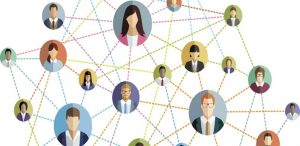To expand your customer relationship and maximize CLV, activating your customers through delivery and adoption is key.
Almost 25 years ago, my wife and I were in the market for a new car. Our family was growing then, and we needed a bigger vehicle to get everyone from point A to point B. Rather than go and walk car lots and have to fend off hungry car salespeople, a friend of mine gave me the name of a broker. He assured me this guy would make my car buying easy and painless.
The next day I called the broker and gave him all the details of what we needed, even down to the color, make, and model. He told me he would call me back in a few days. As promised, a few days later, he called and told me he could drop ship our brand-new Dodge Durango to a dealer nearby for a small upcharge — I was sold. My friend was right. It was easy and painless.
But not for long…
The easy and painless part did not last long. While I was out of town, my wife called me from the dealership where the car was shipped. I picked up and heard her say, “It’s purple!” I was unsure what she was referring to, so I asked her to clarify. “The Durango,” she said. “It is Barney-the-dinosaur purple, and there is no way I am driving this thing off the lot!”
We eventually got it sorted out and did not end up driving a purple Dodge Durango. Still, while the initial buying experience was painless, the service and delivery itself were a disaster, ensuring that the next round of car buying would be much different. If I were going to use a broker, it would not be the one I used for that purchase.
This story is similar to what many B2B buyers go through, highlighting a key element in customer retention. Often, customers are either won or lost not at the point of renewal but during the journey’s delivery and adoption phases, which are critical for improving retention.
New stakeholders
In B2B marketing, various stakeholders may get involved across the different stages of the buyer’s journey. Sometimes, you will only find end-users during the delivery and adoption phases — and they did not necessarily have a seat at the table in the initial stages of the process.
Because of this, brands must understand the expectations of these new stakeholders, listen to the users’ needs and do what can be done to help them improve in their roles. This way, you can tailor delivery and help increase adoption across your customers’ organization.
It’s a hard hill to climb
Providing a great B2B customer experience must begin long before a purchase is made. However, the experience that occurs once a prospect becomes a customer is crucial to building loyalty. The first stage of that journey post-purchase is delivery.
Many B2B customers have shared how their purchase experience turned sour due to a poorly executed service and support strategy, which impacted adoption. A low adoption rate across the organization will lead to your customers looking for an alternative over time.
Brands that stumble out of the gate in the delivery and service of their product or service will have a very hard hill to climb in trying to win back their customers’ goodwill and positive outlook.
I was once involved in a long sales cycle where, after many conversations, a close call of losing the deal and several proposal revisions, we were chosen by the client as the vendor of choice. Two weeks later, we had our kick-off meeting with the key stakeholders and her team (yes, there were new faces that were not a part of the buying process). My services team was present, and after some introductions, they took over.
As the call went on, I began to read the body language of our new customer, which was not positive. I received a text from my client almost immediately after the call saying, “That did not go well, and I expected more.” She was not wrong, and suffice it to say the entire relationship was a struggle from that point forward, and they chose not to renew. It was a hard lesson for all of us, but stumbling out of the blocks cost us a client.
A prerequisite for customer expansion
Maximizing customer lifetime value (CLV) should be a priority for organizations looking to grow. I discussed this in more detail in my article from last month. To improve CLV, many organizations immediately implement upsell and cross-selling strategies. While this is necessary, it should not be the first step after the initial purchase. If done too early in the journey, it can reinforce a bad experience.
If you want to win the opportunity to expand your customer relationship and maximize CLV, understand that activating your customers through delivery and adoption is key. When done correctly, it continues the thread of sterling experience and further drives custom loyalty, making it more likely that your customer will want to explore your other products and solutions.
I was delighted that 45% of brands stated they plan on devoting “more than half of their marketing budget on customer retention.” I hope these budgets will be invested wisely and they will understand the critical path that needs to be taken to win the game of retention and increase their chances for organizational growth.
The post Where B2B brands win and lose on customer retention appeared first on MarTech.
MarTech(8)
Report Post





